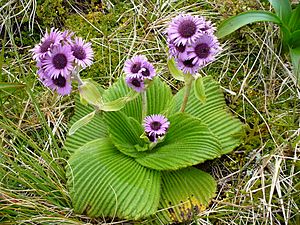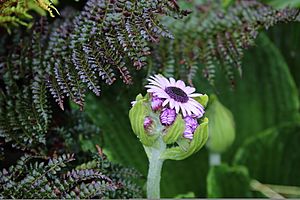Giant emperor daisy facts for kids
Quick facts for kids Pleurophyllum speciosum |
|
|---|---|
 |
|
 |
|
| Conservation status | |
|
Invalid status (NZ TCS)
|
|
| Scientific classification | |
| Kingdom: | |
| (unranked): | |
| (unranked): | |
| (unranked): | |
| Order: | |
| Family: | |
| Tribe: |
Astereae
|
| Genus: |
Pleurophyllum
|
| Species: |
P. speciosum
|
| Binomial name | |
| Pleurophyllum speciosum |
|
Pleurophyllum speciosum, also known as the giant emperor daisy or Campbell Island daisy, is a very large herb plant. It grows naturally on the Auckland and Campbell Islands in New Zealand.
You can even spot this daisy on the New Zealand five-dollar banknote! A special image of the plant is shown on the back of the note. The Campbell Island daisy was first described by a scientist named Joseph Dalton Hooker. He wrote about it in his book Flora Antarctica in 1844. This happened after he collected the plant during the Ross expedition, a big trip to explore the Antarctic region.
Understanding the Conservation Status of the Giant Emperor Daisy
The giant emperor daisy has a special conservation status. In 2009, 2012, and again in 2018, experts called it "At Risk - Naturally Uncommon." This means the plant is not in immediate danger of disappearing. However, it is naturally rare because it only grows in a few specific places. This classification is part of the New Zealand Threat Classification System. It helps scientists keep track of plants and animals that need protection.

